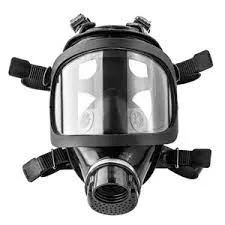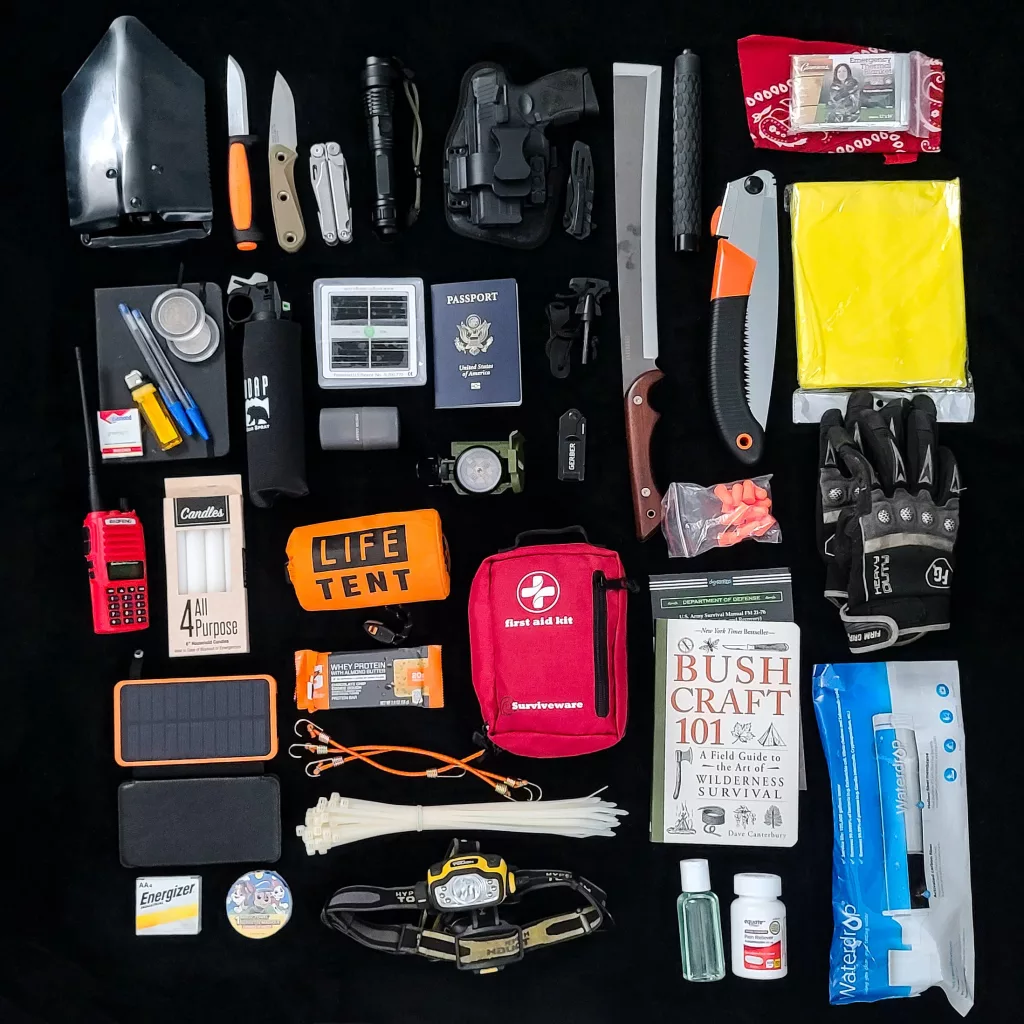Introduction
Recognizing the Importance of Preparedness
A world with the possibility of using nuclear weapons means we need to be careful and plan for safety. A nuclear strike, whether by accident or on purpose, can cause very bad results. This includes an immediate big blast, strong heat and radioactive material release, plus long term dirtying up of the environment all together. We may wish that this situation never happens, but being ready can greatly boost your chances of staying safe and getting better.
It’s very important to think clearly and make quick decisions if a nuclear disaster happens. Having a kit ready to use reduces the need for last-minute searching in crazy situations. It makes sure you have important things easy to get. This lets you concentrate on fast tasks like finding a safe place and keeping yourself from harmful rays.

Learning About the Special Problems of Nuclear Dangers.
Nuclear attacks are very different from other accidents like earthquakes or floods. The primary threats they pose are:
• Blast Effects: The fast boom can cause lots of damage, with strong vibrations able to knock down buildings and hurt people badly.
• Thermal Radiation: The hot fire from the explosion can badly hurt and start big fires.
• Nuclear Radiation: Radioactive fallout from the explosion makes the environment dirty. This can cause bad long-term health problems like radiation sickness and cancer.
These special features need a survival kit made just for them. Unlike regular emergency kits used for quick needs like food and water, a survival kit for nuclear attacks should focus on shielding from radiation and effects of blast.
Differentiating Between Everyday Emergency Kits and Nuclear Survival Kits
While old kits for emergencies are important to help with natural disasters or no electricity, they fail when there is a nuclear attack. Normal kits usually give food and basic needs for a few days. In a nuclear situation, surviving is all about keeping away from radiation and being able to hide for long times.
A nuclear attack survival kit, therefore, incorporates additional crucial elements:
• Radiation Shielding: Things like duct tape, plastic sheets and big coverings can be used to make quick shelters. This helps lessen the chance of fallout getting on you.
• Respiratory Protection: Gas masks or breathing helpers are really important for cleaning bad air and stopping the breathing in of radioactive dust.
• Potassium Iodide: This medicine keeps the thyroid gland safe from radioactive iodine, a common part of fallout.
• Long-Term Supplies: Your kit should have food and water for at least two weeks, maybe even longer. This is because the contamination could last a long time.
Making a complete kit for surviving a nuclear attack needs to change how we think. It’s not just about surviving a short-term problem; you need to protect yourself and your family from something that could change your life forever. By knowing about the special problems from nuclear danger and separating your things differently, you make a very important move toward keeping safe in awful situations.
This is only the beginning of our full guide. Wait for the next parts. They will tell you easy suggestions and tips on how to create your own toolkit for living through a nuclear attack. It will help save your life.

Familiarizing Yourself with Local Emergency Protocols
It’s very important to know what you should do in emergencies near where you live. Research and document the following:
• Designated Shelters: Find and learn about official fallout shelters in your area. Having many choices makes it easier to find a place if something goes wrong or if there are too many people.
• Evacuation Routes: Find main and backup escape paths that lead away from possible dangerous areas. Think about things like busy roads and possible problems.
• Communication Procedures: Make plans with your family about how to talk if the internet stops working. Decide on extra meeting spots and settle for ways of talking such as set radio channels.
Making a Family Plan for Emergencies Related to Nuclear Situations.
A clear family emergency plan helps everyone work together and reduces confusion during a problem. Discuss and document the following with your family:
• Shelter Locations: Assign a special place for each family member and set up a common spot to meet if they get split apart.
• Communication Strategy: Talk about how to send messages if the network breaks down. Include extra phone numbers, special radio channels and planned times and places for meetings.
• Responsibilities and Tasks: Give each family member in the home a certain job, like treating injuries, talking to others or handling resources. This helps to work better and stops people doing the same job twice.
Practice your plan often using fake drills to make sure everyone knows what they have to do. Always change the plan to show how family members or where they live is different.
By spending time on understanding danger levels, local rules and family plans, you set up how to respond properly in a nuclear crisis. Remember, being ready is your best tool for dealing with the uncertainties of a crisis.
Shelter and Protective Gear: Your Fortress Against the Fallout
When a nuclear blast happens, it’s important to find good cover and shield yourself from radiation. This part helps you learn how to make a safe spot and pick the best stuff to increase your odds of living through difficult times.
Designating a Nuclear Fallout Shelter:
• Seek Existing Structures: You should pick a building made with thick concrete or brick walls. These add protection from radiation. Basements, inside rooms that don’t have windows outside and underground parking spots are great choices.
• Improvise if Necessary: If there are no special shelters, think about other options like strong basements. more secure inside closets or even hard indoor furniture put around you to make a homemade cover.
• Prioritize Distance: The more distance you have from the explosion place, the less radiation effect will happen to you. If you have time, move to a safer place before the fallout gets there.
Portable Radiation Shields and Blankets:
• Emergency Blankets: Mylar blankets bounce back heat and light, giving helpful short-term safety if you’re outdoors suddenly.
• Lead Blankets: For extra protection, look at portable lead covers. These give you a good defense against gamma rays.
• Duct Tape and Plastic Sheeting: These useful things can be used to close windows, gaps and doors, reducing the entry of radioactive dirt.
Gas Masks and Protective Suits for Enhanced Safety:
• Respirators and Gas Masks: Pick masks with N95 or better particle filters to stop radioactive bits you might breathe in from dirty air. Check that they fit well and try them out first.
• Disposable Coveralls and Tyvek Suits: These give extra shield from dirt with radioactive dust on the skin. Put them on top of your clothes for extra protection.
Emergency Food and Water Supplies: Fueling Your Fight for Survival
To stay safe after a nuclear strike, you need to make careful plans and manage your resources well. This part tells you how to pick and keep important food and water for your kit.
Non-Perishable Food Items with Long Shelf Life:
• Canned Goods: Choose protein-packed foods like meats, beans and tuna. Choose cans with linings that don’t use BPA to lessen possible health problems.
• High-Calorie Bars and Dried Fruits: Offer fast energy increases and important nutrients. Pick types with longer shelf life.
• Grains and Cereals: Take along things like rice, pasta and oats for long-lasting hunger needs. Make sure to store things well so they don’t get wet or bad.
Potable Water Storage Solutions:
• Bottled Water: Buy big bottles of store water for safe drinking. This will help you get clean water fast when it’s needed.
• Water Purification Tablets: Buy iodine or chlorine tablets to make bad water safe.
• Portable Water Filters: Think about using backpack filters or systems that use gravity to clean a lot of water from places like lakes and rivers.
Radiation-Filtered Water Purification Tools:
• Reverse Osmosis Filters: They are really good at taking out radioactive dirt from water. This gives a dependable answer that lasts for a long time.
• Activated Charcoal Filters: Charcoal filters can’t do all that reverse osmosis does, but they can take out some radioactive stuff and make water better.
Conclusion: Building Your Arsenal for the Unthinkable
Having a kit to stay safe if there’s a nuclear attack isn’t just about being scared. It’s about doing things early to keep you and your family safe from a rare bad event that may still occur. Knowing the special dangers in these situations and getting all required things while learning makes you ready to act quickly. This makes it more possible for you to live longer.
Remember, preparation is key. This guide talked about important things that need to be in a full kit for surviving a nuclear attack. It involved choosing the best place to stay, getting safe clothes and having enough food and water. It also talked about how to set things up properly for these situations. But think of this as just the start. Keep learning and change your tools to match what you need or where you are. Always remember to follow local safety rules and watch out for any new threats.
